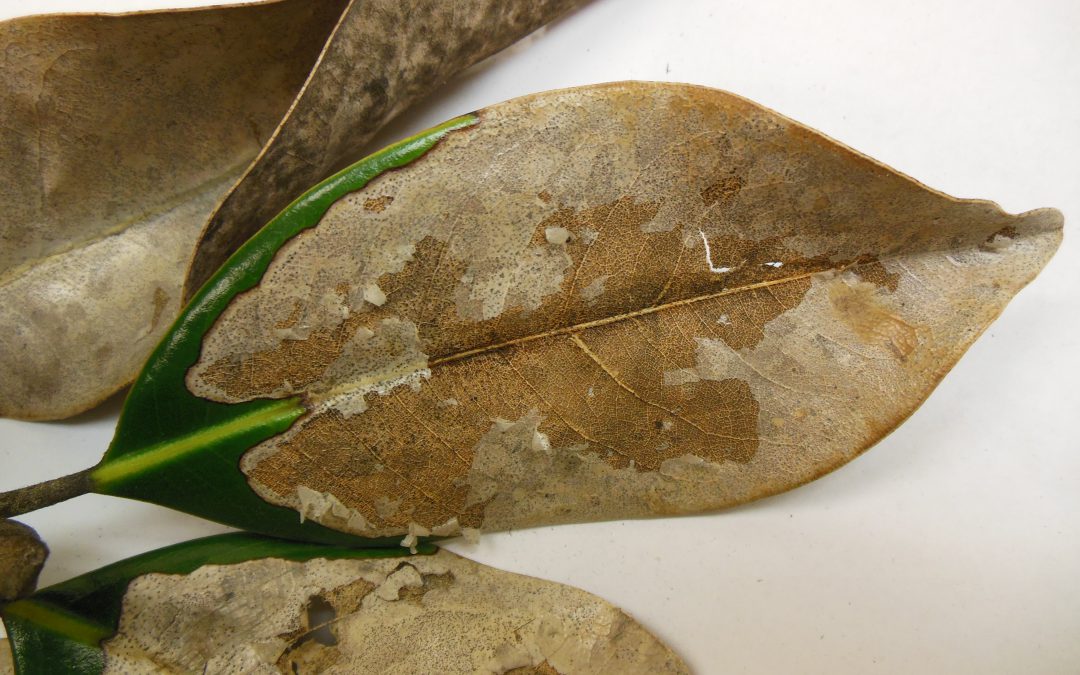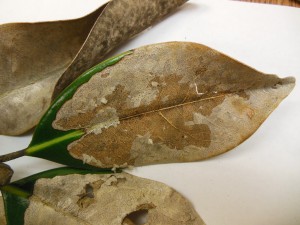
What’s Killing My Magnolia Leaves?
We love our native magnolias in part because they are tough, easy to care for trees. The mainstay of southern gardens, they grace us with attractive thick, waxy leaves year round and sublimely fragrant and graceful blooms.
However, this past spring brought conditions that encouraged a fungal leaf disease known as anthracnose, most noticeably on the southern magnolia, Magnolia grandiflora. Affected leaves develop large irregular dead patches with a clearly defined border. The dead patches are a brownish gray and will flake and eventually deteriorate and fall away from the rest of the leaf. Fortunately it is rare for the disease to affect all branches of the tree and infection is somewhat spotty as you can in the photograph below.
Conditions that favor the development of anthracnose in magnolia are the cooler, moister conditions that the panhandle experienced this early spring. Spores overwinter on affected branches and in leaf litter and travel to their new hosts through rain, wind and splashing water.
View this article to learn more about the Southern Magnolia
[important]The good news is that this disease is rarely a serious threat to the long term health of the magnolia. [/important]
But in order to avoid another infection next spring, remove and dispose of as many affected leaves as possible from the tree and certainly those that have fallen. Avoid irrigation that wets the leaves because the consistent presence of moisture on the leaf is a perfect incubator for anthracnose. Ensure that there is sufficient air flow around the trees. Fungicidal treatment is generally not warranted.
Learn more about Anthracnose by following this link


